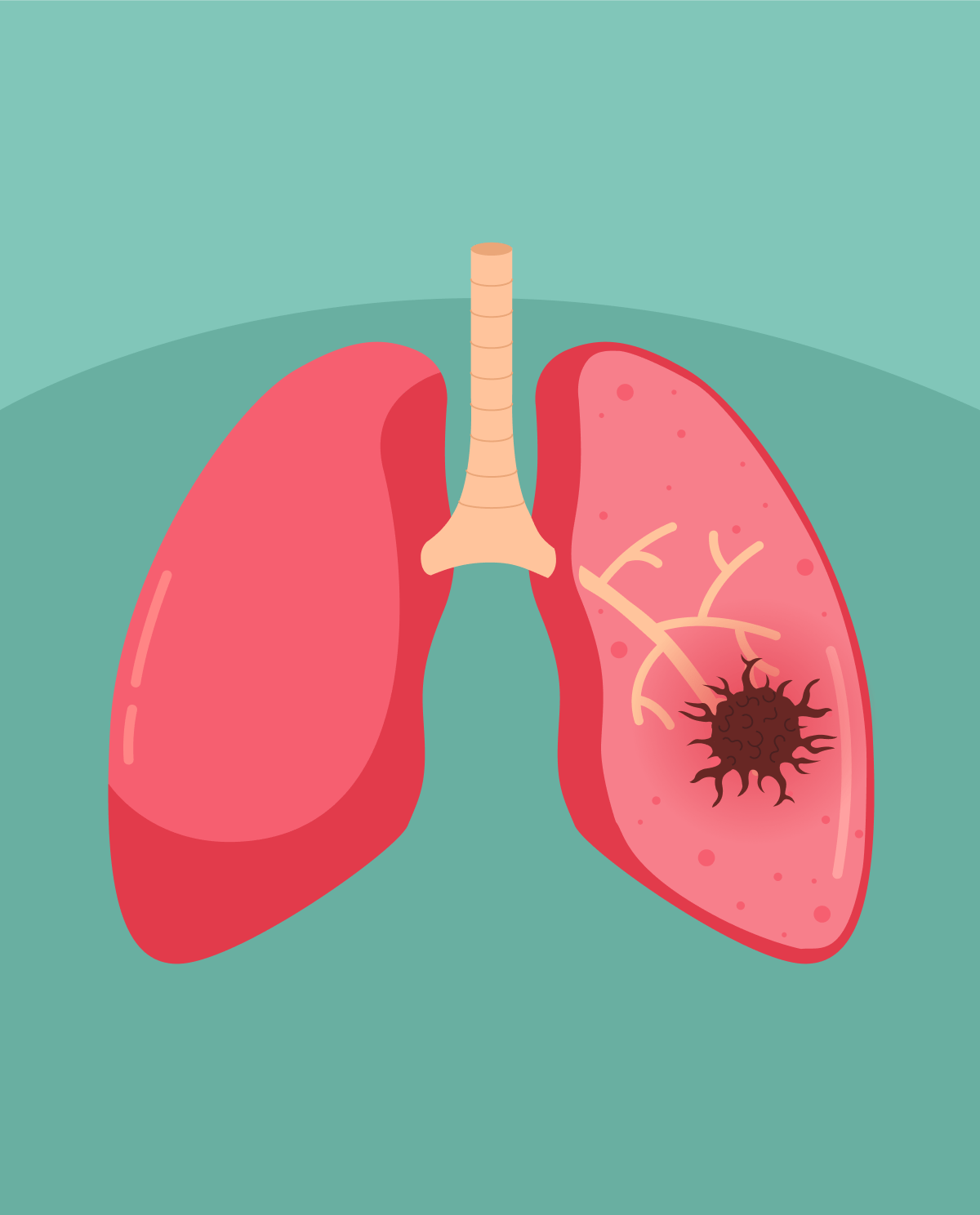Types of lung cancer
- Small Cell Lung Cancer (SCLC) is a disease in which malignant cells (cancer cells) form within cells lining lung tissue. This type of lung cancer is less common than Non-Small Cell Lung Cancer (NSCLC) and is associated with heavy smoking.
- Non-Small Cell Lung Cancer (NSCLC) - this type of cancer covers 85% of all diagnosed lung cancers. This type of cancer involves many different cells.
Risk factors associated with lung cancer
- Smoking or exposure to second-hand smoke,
- Radiation,
- Exposure to toxic gas (i.e., radon),
- Exposure to carcinogens such as arsenic, nickel, chromium, asbestos,
- Family history.
Symptoms associated with lung cancer
- Dry cough that doesn’t seem to go away,
- Hemoptysis (coughing up blood),
- Chest pain,
- Difficulty breathing,
- Weight loss,
- Headache,
- Bone pain.
Diagnostic options
- Imaging (X-ray, CT scan, PET-CT).
- Bronchoscopy: the physician can take a sample of cells by inserting a tube that passes from the throat to the lungs for analysis.
- Mediastinoscopy: an incision will be made in order for the physician to take a biopsy behind the breastbone.
- Percutaneous needle biopsy: a USG or CT is used in order to guide the physician to take a biopsy.
- Thoracoscopy: Video-assisted thoracic surgery (VATS) is a type of surgical procedure that uses minimal invasion to collect a tissue sample for biopsy.
Treatment options for lung cancer
- Surgical options include lobectomy (removal of a lobe), resection (removal of cancer "infested" zone), and pneumonectomy (removal of the entire lung). Surgery may be an option when the cancer is localized in a smaller area without distant metastasis. But if the cancer is large, before surgery, your physician might recommend other treatment modalities such as chemo and radiation therapy to shrink the tumor first.
- Radiation therapy: protons and X-rays are used to induce cell death by causing irreparable mutations. This treatment type is usually reserved for patients who are in an advanced stage of the disease.
- Chemotherapy: this treatment modality is often employed after surgery to induce death in the remaining cancer cells. the following is usually combined with radiation therapy.
- Targeted drug therapy and immunotherapy are usually employed for cancers resistant to other treatment options.








